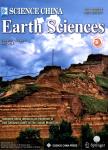Parametric sensitivity analysis of precipitation and temperature based on multi-uncertainty quantification methods in the Weather Research and Forecasting model
Parametric sensitivity analysis of precipitation and temperature based on multi-uncertainty quantification methods in the Weather Research and Forecasting model作者机构:State Key Laboratory of Earth Surface Processes and Resource Ecology Faculty of Geographical Science Beijing Normal University Beijing 100875 China Institute of Land Surface System and Sustainable Development Faculty of Geographical Science Beijing Normal University Beijing 100875
出 版 物:《Science China Earth Sciences》 (中国科学(地球科学英文版))
年 卷 期:2017年第60卷第5期
页 面:876-898页
核心收录:
学科分类:07[理学] 070601[理学-气象学] 08[工学] 0706[理学-大气科学] 082503[工学-航空宇航制造工程] 0825[工学-航空宇航科学与技术]
基 金:supported by the Special Fund for Meteorological Scientific Research in the Public Interest (Grant No. GYHY201506002, CRA40: 40-year CMA global atmospheric reanalysis) the National Basic Research Program of China (Grant No. 2015CB953703) the Intergovernmental Key International S & T Innovation Cooperation Program (Grant No. 2016YFE0102400) the National Natural Science Foundation of China (Grant Nos. 41305052 & 41375139)
主 题:Multi uncertainty quantification methods Qualitative parameters screening Quantitative sensitivity analysis Weather Research and Forecasting model
摘 要:Sensitivity analysis(SA) has been widely used to screen out a small number of sensitive parameters for model outputs from all adjustable parameters in weather and climate models, helping to improve model predictions by tuning the parameters. However, most parametric SA studies have focused on a single SA method and a single model output evaluation function, which makes the screened sensitive parameters less comprehensive. In addition, qualitative SA methods are often used because simulations using complex weather and climate models are time-consuming. Unlike previous SA studies, this research has systematically evaluated the sensitivity of parameters that affect precipitation and temperature simulations in the Weather Research and Forecasting(WRF) model using both qualitative and quantitative global SA methods. In the SA studies, multiple model output evaluation functions were used to conduct various SA experiments for precipitation and temperature. The results showed that five parameters(P3, P5, P7, P10, and P16) had the greatest effect on precipitation simulation results and that two parameters(P7 and P10) had the greatest effect for temperature. Using quantitative SA, the two-way interactive effect between P7 and P10 was also found to be important, especially for precipitation. The microphysics scheme had more sensitive parameters for precipitation, and P10(the multiplier for saturated soil water content) was the most sensitive parameter for both precipitation and temperature. From the ensemble simulations, preliminary results indicated that the precipitation and temperature simulation accuracies could be improved by tuning the respective sensitive parameter values, especially for simulations of moderate and heavy rain.



